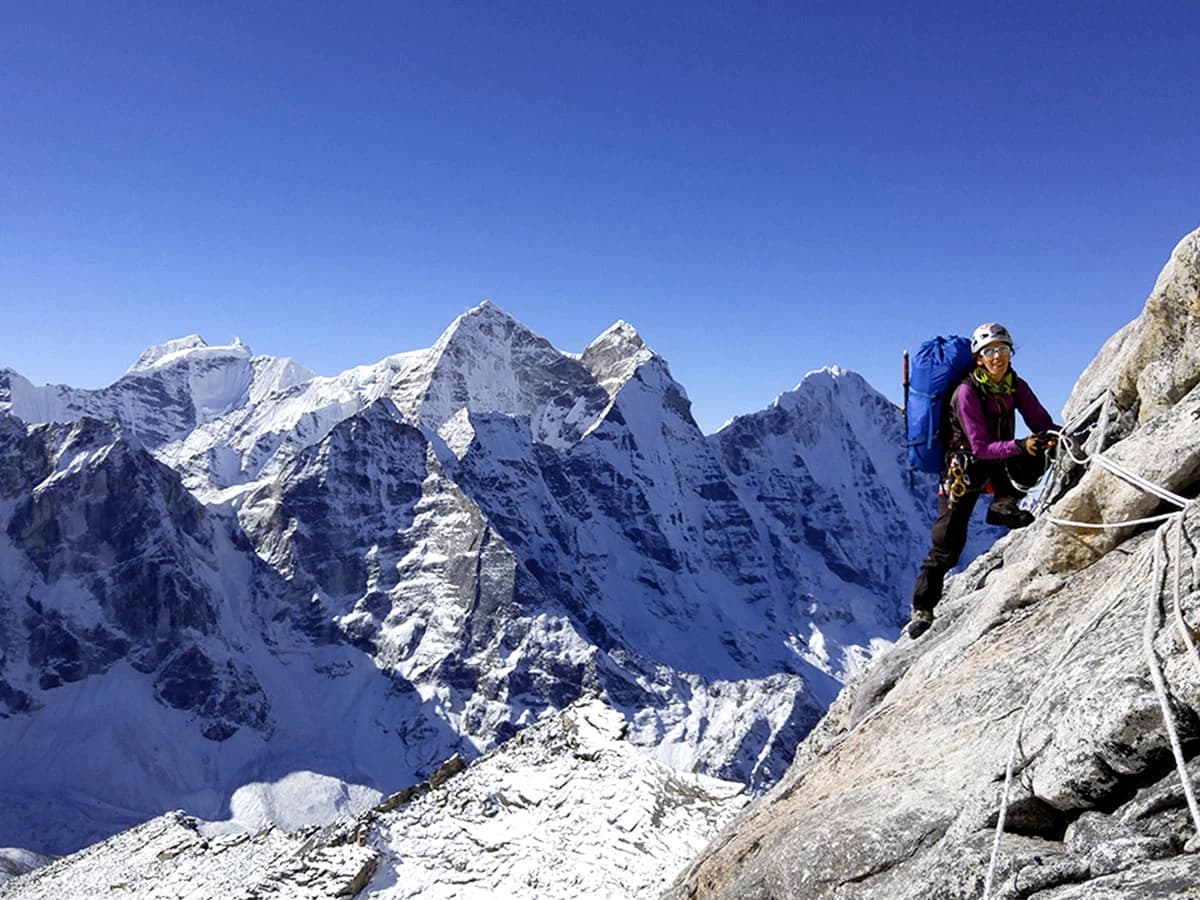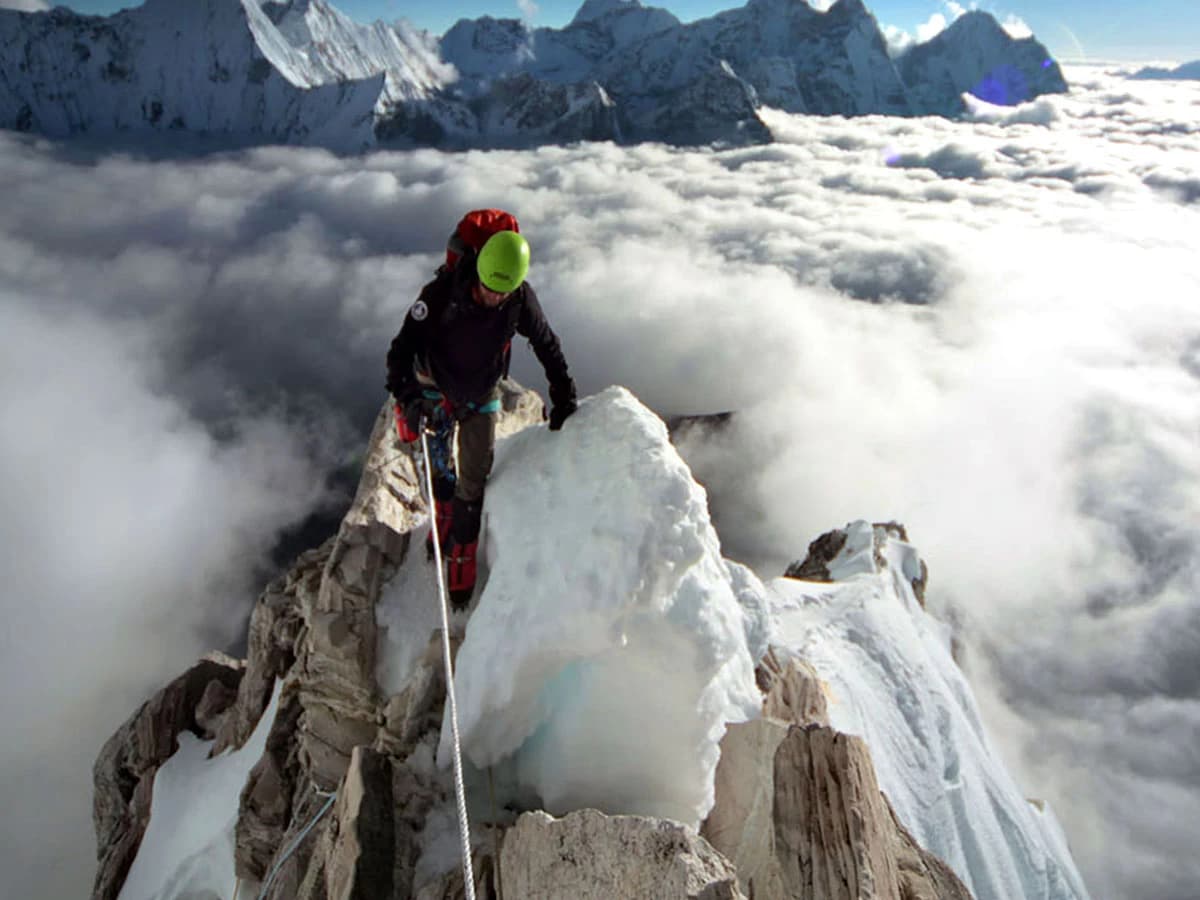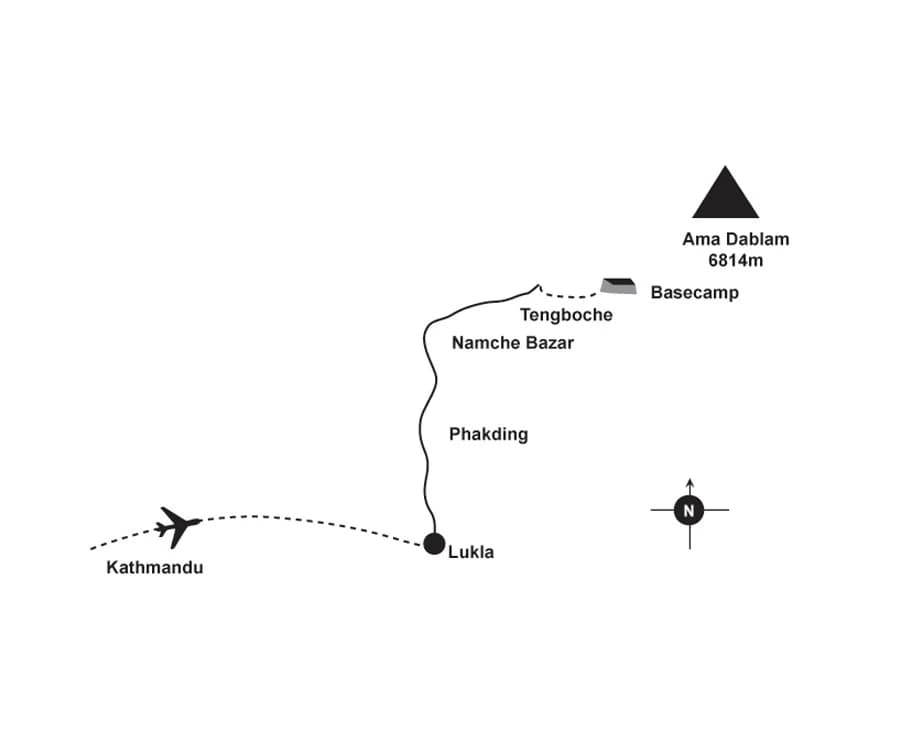Overview
Ama Dablam Expedition is a thrilling adventure that leads climbers to the summit of one of Nepal's most iconic peaks, Ama Dablam (6,812 meters). Known for its stunning pyramid shape and striking beauty, Ama Dablam is often referred to as the “Matterhorn of the Himalayas.” It is a challenging climb that attracts mountaineers seeking both technical challenges and breathtaking views. Below are the key highlights of the Ama Dablam Expedition:
The journey begins with a trek to Namche Bazaar, a vibrant Sherpa town that serves as the gateway to the Everest region. From Namche, trekkers head towards Tengboche, famous for its monastery and stunning views of Ama Dablam. The approach trek offers a gradual ascent, allowing climbers to acclimatize to the altitude while enjoying the beauty of the Khumbu region, including lush forests, high-altitude rivers, and the iconic peaks of the Himalayas.
After reaching Ama Dablam Base Camp (4,600 meters), climbers spend several days acclimatizing and preparing for the ascent. The base camp is set in a picturesque location, surrounded by towering peaks and dramatic glaciers. Climbers use this time to fine-tune their technical skills and familiarize themselves with the climbing route. The camaraderie built during this phase is an essential part of the expedition experience.
The standard route for climbing Ama Dablam is the South-West Ridge, known for its technical challenges and breathtaking scenery. The route features a mix of rock, snow, and ice climbing, requiring climbers to employ various skills. Key sections include:
- The Yellow Tower: A steep, technical rock section that tests climbers' abilities.
- The Camp 1 to Camp 2 Section: A challenging snow and ice climb that involves navigating crevasses and steep slopes.
- The Final Summit Push: Climbers tackle the last section of the ridge, characterized by exposed climbing and stunning views of the surrounding mountains.
Climbers establish two high camps:
- Camp 1 (5,800 meters): Located on a ledge with views of the impressive glacier below, this camp is crucial for acclimatization and rest before the summit push.
- Camp 2 (6,400 meters): Positioned higher on the ridge, this camp serves as the final staging point before the summit attempt.
- Summit day begins early, usually around midnight, to take advantage of stable weather conditions and lower winds. Climbers ascend through the night, often using fixed ropes to navigate the technical sections. Reaching the summit of Ama Dablam is a moment of triumph, rewarded with panoramic views of the Himalayas, including Everest, Lhotse, and Makalu.
After summiting, the descent requires caution, as most accidents occur on the way down. Climbers return to base camp to rest and recover before making their way back through the villages. The journey back offers a chance to reflect on the incredible achievement, with the memories of the climb and the breathtaking views etched in their minds.
The Ama Dablam Expedition is a blend of physical challenge, technical climbing, and stunning natural beauty. The climb not only tests one's mountaineering skills but also provides a profound connection to the majestic Himalayas. With its breathtaking landscapes, rich culture, and sense of achievement, climbing Ama Dablam is an unforgettable experience that continues to attract climbers from around the world.
Highlights
- stunning pyramid shape and impressive ridge lines
- One of the most recognizable peaks in the Himalayas.
- vibrant Sherpa villages like Namche Bazaar and Pangboche
- Breathtaking views of the Everest region.
- offers panoramic views of surrounding peaks including Everest, Lhotse, and Makalu.
Cost of Ama Dablam Expedition
The cost of the Ama Dablam Expedition varies by package level:
- Basic Package: $4,000 to USD 7,000 per person, covering permits, guides, and basic base camp support.
- Standard Package: $8,000 to USD 12,000 per person, including meals, porters, and better base camp facilities.
- Luxury Package: $13,000 to USD 20,000 per person, offering high-end services like premium accommodations, extensive Sherpa support, upgraded meals, and advanced logistical assistance.
- Prices vary based on group size, season, and included services.
What Can You Expect from the Ama Dablam Expedition?
Embarking on an Ama Dablam Expedition, you can expect a challenging yet rewarding climb that combines technical rock, ice, and snow climbing, breathtaking views of the Himalayas, cultural immersion with Sherpa communities, team camaraderie, and a sense of accomplishment upon reaching the iconic summit of Ama Dablam.
Who is Suitable for the Ama Dablam Expedition?
The Ama Dablam Expedition is suitable for experienced climbers with solid high-altitude trekking experience, technical skills in rock and ice climbing, and previous climbs above 6,000 meters. Ideal candidates should be in excellent physical condition, mentally resilient, and familiar with using technical mountaineering equipment such as ropes, crampons, and ice axes. Previous experience on a similar technical peak is highly recommended.




